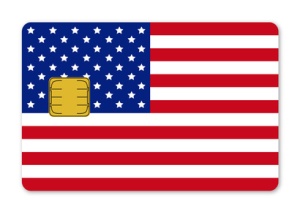
US Credit Card Ownership?
So just how many credit cards are in circulation in the US? According to a survey commissioned by The Federal Reserve Bank in Boston there were 176.8 million individual credit card holders in the US in 2009 and of those credit card holders on average they held 3.5 different credit cards each, which essentially triples that number when it comes to the actual number of pieces of plastic out there. VISA cards are the most popular cards these days apparently as there are 270 million of them out there versus MasterCard’s 203 million. Discover comes in next at just over 53 million and there are around 49 million American Express in circulation. Oddly enough VISA is not the oldest of the major credit cards companies though, American Express and MasterCard have both been around for longer.
The sheer amount of plastic that is out there in the US gets even higher if you factor in store cards, debit cards and prepaid credit cards. That same Boston survey revealed that in 2009 the average consumer between the age of 21 And 60 owned 5.6 cards of one kind or another.
One area of credit card ownership that has drawn a lot of fire over the years is student credit card ownership and the Credit Card Act of 2009 was supposed to address student overspending on easy to get student credit cards. How has that worked so far? According to Sallie Mae at the end of 2009 on average undergraduate students still had an average of 3 cards each and 87% of them had at least one (although that is down from 94% in 2004). Only 2% of undergraduate students have no credit history at all by the time they are 21 – good or bad. In addition 39% of freshman actually arrive on campus already having at least one credit card to their name.
Which Credit Card Company Gets the Best Marks?
VISA may have the most credit cards in circulation but do they have the best customer satisfaction rating? Not according the 2010 JD Powers Customer Satisfaction Survey. According to those credit cards statistics it broke down like this:
1. American Express
2. Discover
3. US Bank
4. Wells Fargo
5. Chase
6. Barclaycard
7. Bank of America
8. Capital One
9. Citi
10. HSBC
To be fair this survey asked consumers about their individual card providers, not the kind of credit card they possessed and unlike American Express and Discover VISA and MasterCards are provided by a great many different financial institutions, although it was Chase, when they were still Chase Manhattan Bank in the 1980s, who issued the first VISA cards.
Credit Card Debt Statistics
The most talked about credit card statistics are of course any that relate to the amount of credit card debt Americans are carrying. One rather fascinating statistic came from a survey conducted by creditcards.com that found that even discussing credit card debt is a big taboo in the US. That survey found that credit card spending habits came at the top of a list a list of things people would not discuss with a casual acquaintance. 50% of respondents said they would talk about their weight but 81% of those asked said that they would never discuss credit card debt or spending with those they did not know very well, either their own or the person they were conversing with. In other words even if they do know their credit card balance may be a little high no one wants to talk about it.
As to actual debt figures a 2007 study by demo.org, the most recent conducted on the subject 54% of Caucasian households surveyed admitted to carrying a balance on their credit cards almost all the time and 74% of African American households admitted the same. Hispanic credit card holders in the US have the lowest percentage (in this survey) of debt as only 42% carry a balance from month to month.
Student credit card debt still seems to be the biggest problem though, despite all the new legislation. At the end of 2009 Sallie Mae discovered that students were, on amperage, carrying more credit card debt than ever, much of it related to the cost of day to day living expenses, not luxury spending. The Sallie Mae survey found that on average undergrads were carrying $3,173 in credit card, more than triple the amount that students carried in 2004. Seniors graduating in 2009 were graduating with a whopping $4,100 in credit card debt on average, not the best way to start out in the working world!